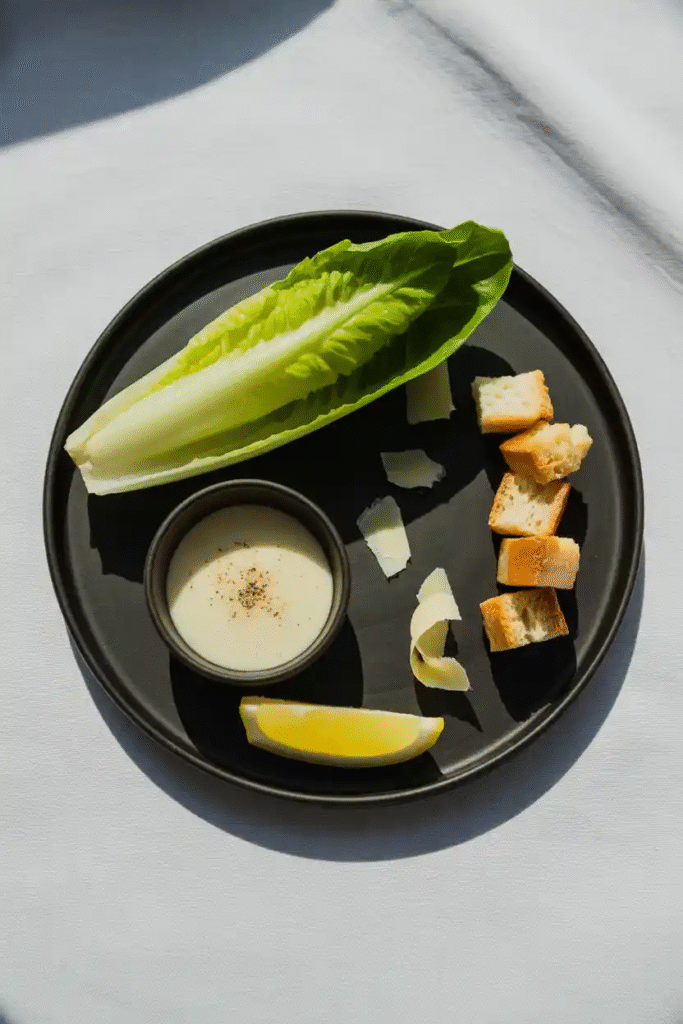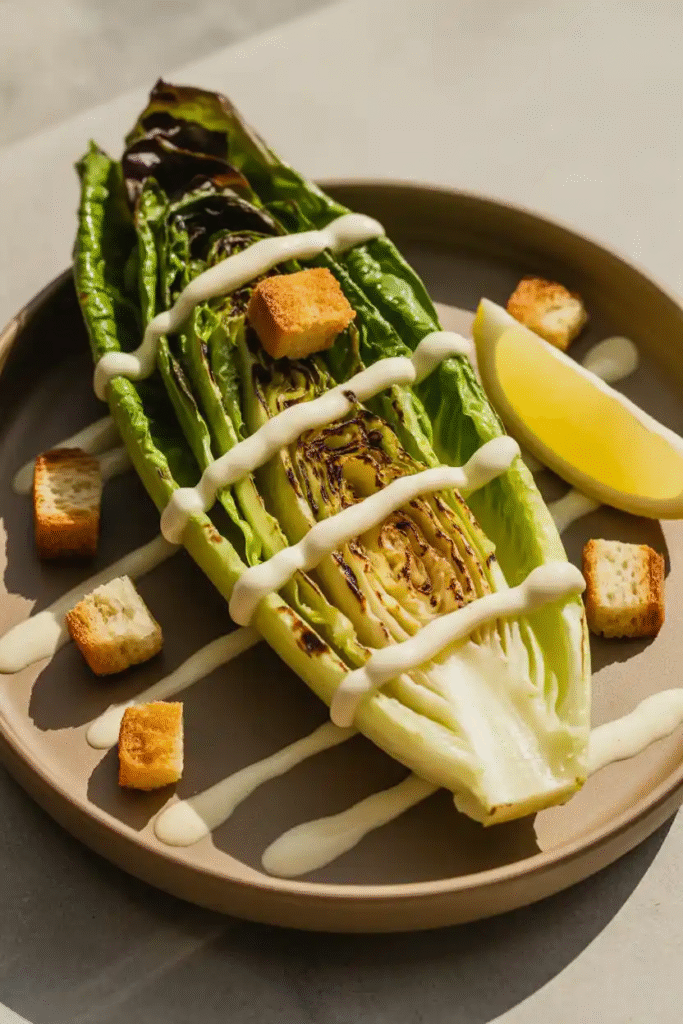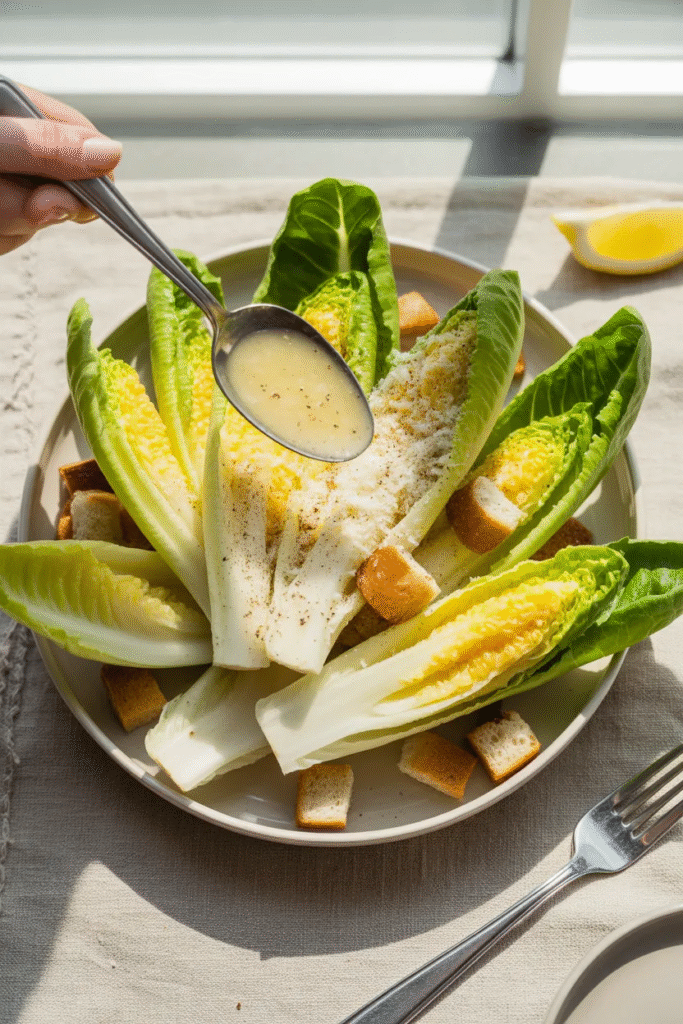Caesar Salad Plating: How to Turn a Classic Dish into a Visual Masterpiece
The Caesar salad is one of those timeless dishes that manages to feel both simple and sophisticated. Crisp romaine lettuce, creamy dressing, crunchy croutons, and a sprinkle of Parmesan cheese—each element plays a role in creating that unmistakable balance of freshness and flavour. But in today’s culinary landscape, taste alone isn’t enough; presentation matters just as much. The art of Caesar salad plating is about elevating an everyday favourite into a restaurant-worthy visual experience.

Whether you’re hosting a dinner party, developing content for your food blog, or simply love the aesthetic of a well-presented meal, mastering Caesar salad plating can transform your dish from ordinary to extraordinary.
Understanding the Importance of Plating
Plating is more than decoration—it’s the language of presentation. Studies show that we eat with our eyes first; the more visually appealing a dish, the greater our anticipation and enjoyment. With something as familiar as a Caesar salad, thoughtful plating can reawaken appreciation for its textures and colours.
A traditional Caesar salad offers natural contrast: green romaine leaves, golden croutons, pale dressing, and ivory shavings of Parmesan. The goal of plating is to arrange these elements so they look intentional rather than tossed. This is especially valuable when serving guests or photographing food for social media, where visual storytelling enhances the dining experience.
The Foundation: Choosing the Right Plate

Before you even think about arranging the salad, choose the right plate. The plate is your canvas, and its shape and size will influence how your Caesar salad looks.
- Wide, shallow bowls or flat plates work best for salads because they prevent overcrowding and make it easier to distribute ingredients.
- White or neutral-coloured plates are ideal since they let the salad’s natural colours shine.
- For a more rustic presentation, wooden boards or stoneware can create a farm-to-table aesthetic that complements the Caesar’s classic roots.
When plating, always leave some negative space—empty areas that give the eye room to rest. This creates balance and sophistication.
Building Structure and Height
Height gives your salad dimension and makes it more visually appealing. Instead of piling everything in the centre, layer strategically.
- Start with the largest lettuce leaves—preferably whole romaine hearts—to create a base.
- Layer smaller pieces in the centre, fanning them out like petals for a natural yet structured look.
- Drizzle dressing lightly, letting it cascade down the leaves. Avoid drowning the greens; the key to good Caesar salad plating is control and restraint.
You can use kitchen tweezers or tongs to position ingredients precisely. This method ensures every component looks intentional and photogenic.

Highlighting Key Ingredients
Every Caesar salad is built around four star components: lettuce, dressing, croutons, and Parmesan. For professional-looking plating, each should be visible and balanced.
1. The Lettuce
Choose crisp, fresh romaine hearts with vibrant green colour. Trim the base slightly but keep the leaves attached if possible. Whole-leaf presentation adds drama and elegance. For a modern twist, grill the romaine briefly before plating—it adds smoky flavour and a charred aesthetic.
2. The Dressing
Caesar dressing is thick and luxurious, but it should be applied artfully. Instead of tossing the entire salad, try spooning or drizzling dressing over sections of the leaves to create contrast between coated and fresh textures.
3. The Croutons
Uniformity is key. Use homemade croutons cut into similar sizes and scatter them evenly for texture. Avoid overloading the plate—five or six per portion is enough. For extra flair, stack a few on the side or lean them against the lettuce mound.
4. The Parmesan
Parmesan ribbons (made with a vegetable peeler) look elegant and catch light beautifully. Sprinkle some on top and let others fall naturally onto the plate. This asymmetry feels organic while still refined.
Adding the Finishing Touches
The secret to unforgettable Caesar salad plating lies in the details.
- Black pepper freshly ground over the top adds texture and visual contrast.
- A lemon wedge placed on the side adds colour and gives guests control over acidity.
- Anchovy fillets, though optional, can be draped artistically across the salad for an authentic touch.
- Microgreens or edible flowers can provide colour contrast without overpowering the dish.
For fine-dining presentation, consider brushing a thin line of Caesar dressing or balsamic reduction across the plate using the back of a spoon or pastry brush. It signals creativity and precision.
Plating for Food Photography and Social Media

If your Caesar salad is destined for Instagram or your food blog, a few additional plating techniques can make your photo pop.
- Lighting: Natural light from the side or behind the plate enhances texture and freshness. Avoid overhead lights that create harsh shadows.
- Angles: Shoot from above (flat lay) for symmetry or at a 45-degree angle to highlight height and depth.
- Props: Use simple cutlery, linen napkins, and wooden boards to create context without clutter.
- Editing: Enhance brightness, contrast, and sharpness slightly, but keep colours natural—Caesar salad plating should look appetising, not artificial.
Pinterest users love “minimalist yet mouthwatering” salad imagery, so think clean, fresh, and balanced rather than busy.
Creative Variations for Caesar Salad Plating
You can experiment with plating styles to suit different moods or occasions. Here are a few inspiring approaches:
1. Deconstructed Caesar
Instead of mixing everything, separate components artfully on the plate—lettuce on one side, croutons in a neat pile, dressing in a small ramekin, and Parmesan ribbons scattered in between. It feels modern, interactive, and perfect for fine dining.
2. Layered Mason Jar Caesar
For picnics or casual gatherings, layer ingredients vertically in a clear mason jar: dressing at the bottom, followed by croutons, lettuce, and toppings. When inverted onto a plate, it forms a stunning tower with natural height.
3. Mini Caesar Cups
Serve individual portions in small bowls, lettuce leaves, or even edible Parmesan cups. This style is elegant for parties or buffets and ensures guests get the perfect bite every time.
4. Protein-Enhanced Caesar
Add grilled chicken, shrimp, or tofu arranged diagonally across the plate to create visual flow. Garnish with lemon zest or chives for a pop of colour.
Each of these plating ideas adds a twist while keeping the essence of the classic Caesar intact.
Professional Tips for Perfect Caesar Salad Plating

- Keep textures distinct: Don’t overdress lettuce or add croutons too early, or they’ll lose their crunch.
- Use cold plates: Chilled plates maintain the salad’s crispness longer.
- Mind symmetry and asymmetry: Too much symmetry looks forced; too little looks messy. Find harmony between structure and spontaneity.
- Clean the edges: Wipe any stray dressing or crumbs from the rim for a polished finish.
These techniques are the difference between a home salad and a plate that looks straight out of a Michelin kitchen.
Final Thoughts
Caesar salad plating is a subtle art—a dance between taste and presentation. You’re not reinventing the salad; you’re celebrating its timeless ingredients through thoughtful arrangement. Whether you’re cooking for guests, curating content for your food page, or simply elevating your weeknight meal, good plating transforms eating into an experience.
So the next time you make a Caesar salad, slow down. Arrange each leaf like a brushstroke, let the dressing glisten under the light, and remember: the perfect plate doesn’t just feed the body—it delights the eyes.
